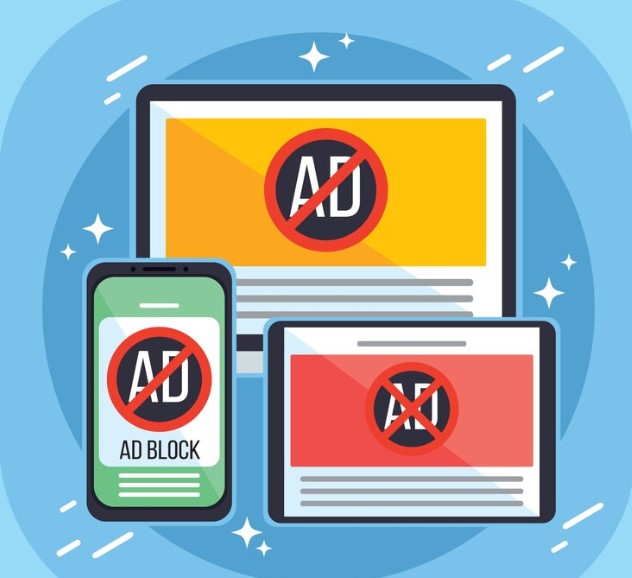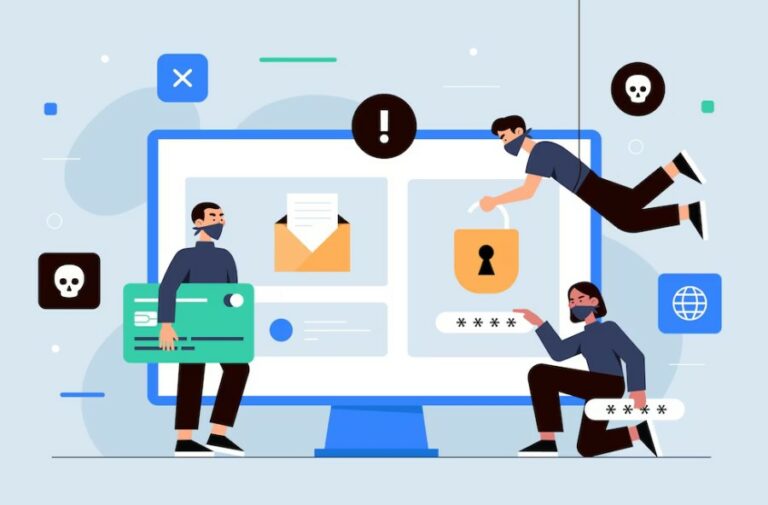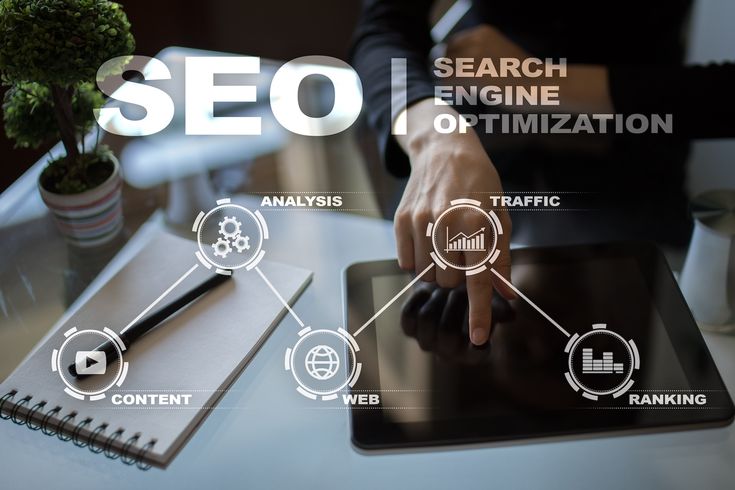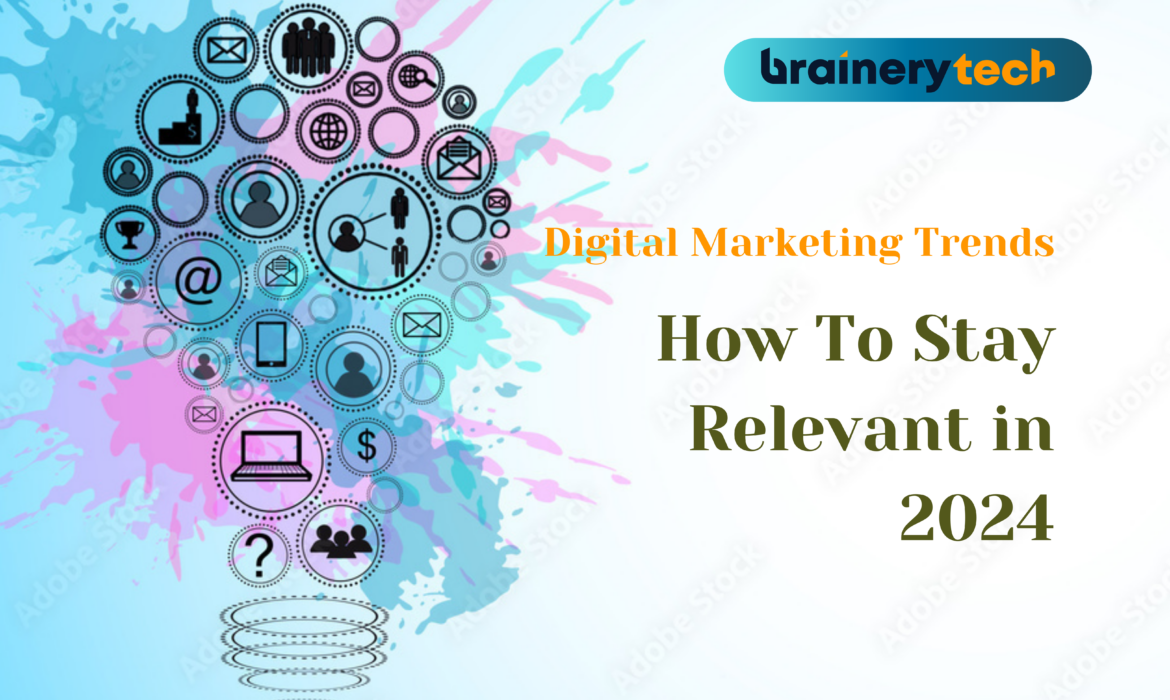Navigating Digital Marketing Challenges in 2024: Key Issues & Practical Solutions
1. Data Privacy Concerns
Thanks to policies such as GDPR and CCPA, customer information’s security has emerged as a primary concern. Simply, marketers have to work with those regulations while keeping their campaigns efficient.
Solution: Data privacy measures should be protected by informing users as to the data collected and acquiring user consent besides data storing practices should also be adopted. It is advisable to frequently conduct awareness of policy to conform with the legal legislation on the matter.


2. Algorithm Changes
This becomes a challenge to the marketers because the algorithms in the social media such as the Twitter, Face book and the search engines are dynamic.
Solution: Be aware of current changes in algorithm and work on how to improve the situation. Concave utilization of content creation that is relevant, useful and of good quality in relation to the target market. Implement social listening so that you can know how changes have affected your reach and engagement, adapt when needed.
3. Content Strategy and Implementation
Crafting a well-defined content strategy and deploying the plan for distribution across the various platforms is not easy.
Solution: First of all, it is necessary to state your content objectives, target audiences, and respective key messages. Use a content calendar to layout the content for successive weeks or months in order to achieve consistency in the content posted. Edit for content creation tools, and always analyze the content’s effectiveness so that it may be updated as needed.


4. Omnichannel Marketing
Crafting a well-defined content strategy and deploying the plan for distribution across the various platforms is not easy. Coordinating the maintenance of a rigid and standard branded imaging across numerous platforms as well as allowing for the achievement of a satisfactory customer experience is a challenging task.
Solution: Make sure you have a harmonized campaign that you run on social media, email, and the website to portray the brand consistently. The current business can also apply marketing automation software to ensure that its operations are more streamlined and standard. Take time and evaluate your customer across each of the touch points to align your customer journey.
5. Ad Blocking
Other challenges are Innovation through ad-blocking new tools hinder the ability of marketers to connect to its target population through general web advertising.
Solution: Focus more on other forms of advertising techniques like the native advertising and the sponsored content since they cannot be blocked. Promote inspirational, professional, and relevant content which standards appeal your target customers. It might be useful to turn to other kinds of advertising such as influencer marketing or going to social networks as ad blockers might eliminate the ads.
6. Measuring ROI
Calculating ROI of digital marketing is not always precise because there are always few channels and touch points involved here.
Solution: Engage the basic to advanced level analytics tool in order to monitor the KPIs of all the channels. To know the conversion performance of each channel, create the right attribution models. Remember to maintain data analysis to adapt your efforts and enhance the rate of return in the long run.

7. Security Concerns
Due to the fact that digital marketing employs the use of website and data, it is essential to safeguard the customer data.
Solution: Implement robust cybersecurity measures, such as encryption, secure payment gateways, and regular security audits. Brief your staff on the proper measures to take when handling data and specify the existing measures of security. On your site guarantee your audiences that you will protect their information to earn their trust.
8. Audience Fragmentation
The use of the digital media has created the problem of audience dispersal, and therefore there is no united base audience.
Solution: Concentrate on those channels that proved effective with the identified segment of the population. Create separate messages and content for each type of the audience while maintaining a coherent message throughout the company. Utilize cross-media communication so that all communications can be connected with one another.
9. Following the Trends
The culture of shifting in extremely short periods can create a problem of obsolescence as far as the agency’s marketing techniques are concerned.
Solution: Be aware of contemporary trends by reading the information regarding the topic, following the blogs, and commenting on posts by professionals. Use of tools on account of trend analysis with the aim of gauging the trends in the various topics and behaviors. Include trends into your marketing approaches in order to keep them contemporary: yet think of trends that match your brand.


10. Creating Engaging Content
It becoming even difficult to post content that can stand out and even post something that people would find interesting enough to view.
Solution: Do not try to publish as many articles as possible but rather stick to those, which are interesting, useful and funny at the same time. Engage your audience to your content by applying different formats including videos, infographics, and many more. As the world evolves continue to check the popularity levels of the topics that you consider posting to your page.
Digital marketing brings about its own set of consideration that needs a lot of mind work and flexibility. Being aware of these difficulties and applying the solutions described above, you will be able to operate within digital environment more efficiently and achieve preferable marketing results. It is also equally important to remain active, be a perpetual student and be prepared to shift strategies as and when the course dictates as the market is ever dynamic in this field.
Proven Strategies to Boost Your Website Performance
Learn how to enhance your website’s speed and efficiency. Implement these proven strategies to take your site’s performance to the next level.
The Mechanics of Social Media Marketing
Explore the Social Media Marketing strategies and algorithm to help your brand thrive in the dynamic digital landscape.
Digital Marketing Trends: How To Stay Relevant in 2024
A
s we are in the year of 2024, it feels like the digital marketing space is changing faster than ever. To really stay ahead of the game, what one needs to keep a watch out for is the latest trends and technologies shaping the industry. Here is a rundown of top trends and strategies that will future-proof your digital marketing efforts and drive your brand to new heights:
1. Short-form Video Content:
TikTok and other short-form video platforms are not just momentary fads—they are changing the face of social media strategies. Fast and engaging, they dictate the pace for capturing attention and going viral. Brands that do a great job of effectively harnessing the power of short-form videos can dynamically share content that speaks to young audiences and increases their social presence.
2. The Power of User-Generated Content (UGC)
User-generated content is no longer an option; it’s a powerhouse for brand awareness. UGC means authenticity and trust, speaking to real customers sharing their real experience. Encouraging and sharing UGC enables a brand to further glue its audience together and build credibility.
3. Adapting to Search Engine Algorithm Changes
When it comes to the strategy of the adaptation to the changes that occur in the search engine algorithm, it is always good to move forward with care.
Search engine algorithms are growing constantly, and thus, one has to be flexible in implementing okay strategies. By keeping up-to-date with the new changes and ensuring that you incorporate, the changes in your strategies, it will assist you in keeping your visibility in the search engines and would also help in bringing in more organic traffic to your site.


4. Expanding Conversational Capabilities with AI-Powered Chatbots
It’s time to revolutionize customer services through AI by availing of chatbots for real-time treatments of clients. These tools improve customer satisfaction because in most cases users are able to get quick answers to their questions, problems solved, and are led through the customer interaction process easily.
5. Exploring Voice Search Optimization
As people are adding more voice-activated devices in their homes and cars, it is quite vital to start optimizing your content for the voice search. Appeal to voice to will demand the use of natural language and long-tail keywords if you are to be visible for voice search.
6. Investing in Interactive Content
The quizzes, polls, or even any type of Infographics that is in such a way that it can be accessed and manipulated by the users can go a long way in increasing engagement and the participation of the users. This type of content not only grabs attention of the users but also helps in involving the users with your brand for more time.
7. Augmented Reality (AR) and Virtual Reality (VR)
Augmented Reality (AR) and Virtual Reality (VR) are the technologies that are revolutionizing the space for brand-audience interaction. Both of these technologies have proven to be effective formats in advertising, and are now physically altering approaches for presenting products, creating virtual tours, and improving the customer relationship.

8. Personalization: UIX – Designing for Individual Interactions
This is one of the significant areas that dictate the manner and extent to which audiences are going to be engaged and, therefore, the experience they are going to get out of it. The bottom line is with the help of data, you can build a more targeted content, product recommendations, and messages that will lead to an enhanced and highly converting user path.
9. Prioritizing Privacy and Data Protection
Since the focus is made again and again on the privacy, it is important to secure user information. Increasing the reliability of data protection measures and disclosing how data will be utilized will create trust, and users will respect regulations.
10. Making Data-Driven Decisions
Many tactical decisions that have to be made in the course of promotional efforts should be based on analysis of given data. Just for real time data analysis and our formula driven insights, one can take good decisions leading to better performance.
11. Embracing Sustainability and Purpose-Driven Marketing
Consumers are in a position to engage with brands more selectively and, therefore, the values such brands reflect, matter to them. There is nothing as powerful as purpose for a company’s marketing strategy not only for the sake of the consumers but also for brand identity in the market.
12. Implementing Advanced Analytics for Deeper Insights
Promoted customer analytics is much deeper than in the case of using traditional tools and methods in marketing and advertising. The use of all these tools helps you in making better, wiser and informed decisions in your marketing endeavors.
As we forge ahead to the rest of the year and further into 2024, tracking them and their implementation into an organizations’ digital marketing plan will go a long way in keeping up with the competition. Accept them and your brand will be well placed to succeed within the ever evolving digital environment.
Digital Marketing: Basics to Breakthrough
Several new trends in the growing digital environment point to the fact that marketing in the modern world is mandatory not only for large enterprises but also for start-ups and SMBs. With over 4.9 billion internet users worldwide, understanding and utilizing digital marketing can be your key to success.
Here are the fundamentals, together with the tools and techniques, that will enable you to go from ‘start-up’ to ‘step-up’ in your social media management.
1. Understanding Digital Marketing
- Search Engine Optimization (SEO): Promoting your website so that it is listed in a higher position on the popular search engines.
- Content Marketing: Developing content that will interest its readers and target market to your site.
- Social Media Marketing: This involves advertising through sections such as Facebook, Instagram, Linked, and Tweeter.
- Email Marketing: Use of the text messaging to follow up on the leads with an aim of selling and to foster loyalty with the existing clients.
- Pay-Per-Click (PPC): A model of internet marketing where you are charged each time the ad is clicked by a customer.
- Affiliate Marketing: Making money for selling other people’s or companies’ goods.


2. The Basics
Before diving into complex strategies, it’s crucial to establish a strong foundation.
Define Your Goals:
It begins with well-defined objectives that are known can be quantified. It may concern such goals as a higher website traffic rate, a higher rate of leads, or higher sales; having such goals outlines the direction of strategies.
Know Your Audience:
Some of the most important elements of focus of digital marketing are to know your market. Craft specific buyer profiles that will help you determine what kind of content to use, the type of messages to convey and where to place the ads in particular.
Develop a User-Friendly Website:
Your website is your introduction to the world and your customers – your business face as it were. It should be responsive, fast and simple to use across most of the mobile devices. Ensure that you have strong call to actions to help the visitors find their way to the results you expect from them.
3. SEO: The Cornerstone of Digital Marketing Success
SEO is critical in ensuring the business is visible in the cyberspace. Through improper optimization of the site and its content, you can significantly improve its ranking, increase the traffic, and, therefore, the number of customers.
On-page SEO:
It concerns the optimization of every particular webpage of a given website to enhance the likelihood of ranking high in the search engine results’ page. This includes properly selecting keywords and their placement in your content, an effective use of meta descriptions that will make people click on your links. In addition, it is necessary to pay attention to the general quality and organization of the content of the site— it has to be useful and interesting, and the site has to have clear navigation.
Off-page SEO:
It concerns activities that you perform outside your website that affects your ranking. This mainly involves creating linkages from other quality sites and this tells the search engines that your site is a worthy reference site. Advertising on social networks, commenting at the relevant forums, and building relations with key influencers are also the off-page SEO techniques.
Technical SEO:
It concerns fine-tuning the executional parameters of your site. This entails checking that your site can be easily crawled and ranked by search engines, its response time is always fast and that it is safe to use with a HTTPS encryption. Further, it is crucial to have a responsive theme that will run on any device with a particular focus on the mobile one.

4. Content Marketing: Captivate and Educate Your Audience
In current digital marketing landscape it can be said with a lot of certainty that content is the king. Good content marketing is not about broadcasting facts; instead, it is about telling a story that your audience can identify with, respond to, and benefit from at each of the stages of the content marketing funnel.
Blogging:
As you post regularly on your blog regarding problems – solutions or questions or topics they are interested in, then you are creating value in the minds of the target market. Each of the post should be equally balanced and informative so as to address certain issues and offer solutions to the same.
Video Marketing:
In the world today where people’s attention is shorter than the time it takes to blink an eye. Services like You Tube, Instagram and Facebook gives you great platform to connect or interact with your targeted clients.
eBooks and Whitepapers:
If businesses want to make themselves known as authorities in a particular field, then business types such as eBooks and whitepapers are a boon in that they allow for specialization within niche areas. You can use these broad guides to give readers a chance to see that you possess significant knowledge and understanding of the topic through proving insights, data and recommendations that would be pertinent to the reader.
5. Social Media Marketing: Create Your Brand’s Awareness
Social marketing tools have gone beyond potential and contain great opportunities for brands and audiences’ interaction. Select appropriate platforms according to customers’ characteristics and company’s objectives.
Create a Content Calendar:
Social media marketing is all about being constant. Always post at a consistent time and frequency also plan in advance for your next post.
Engage with Your Audience:
It is not just a method of posting information which is of equal to broadcasting but is actually an interactive system. To further extend the creation of a strong customer base the user must interact with the target market through comments, messages and mention.
Leverage Paid Advertising:
Social networks such Facebook, Instagram, and LinkedIn that have advanced targeting techniques that enable a user to customize his prospects based on their age, gender, interests, behaviors and many others. From brand awareness, product launch, to driving web traffic, the paid ads offer the precision when it comes to defining your objectives.
6. Email Marketing: Nurture and Convert
Email marketing is also one of the most popular strategies to leads nurturing and their conversion to customers.
Build a Quality Email List:
More emphasis should be put on collecting the list of subscribers who are active. Set up lead magnets that are incentives to the readers such as complimentary guides, special offers or more materials.
Personalize Your Campaigns:
Try to divide your audience to segments and send them different e-mails. This is because personalization can increase the delivery of emails, openness rates and also conversion rates substantially.
Track Your Metrics:
Honestly, open rate, click-through rates, and conversion should be tracked as often as possible for the purpose of enhancing the campaigns.
7. PPC (Pay-Per-Click): Fast Results
Unlike SEO, which is a long-term marketing approach, PPC has an immediate effect in terms of visibility. Google Ads and social media ads are some of the tools that can be used to increase traffic quickly.
Keyword Research:
Choose keywords that your potential clients are using and bid so that you appear at the top of search results.
Ad Copy and Design:
Create captivating ad copies and visually arresting designs to attract clicks. Ensure that your adverts match the landing pages they link to.
Monitor and Adjust:
Constantly observe how your pay per click campaigns perform and tweak them according to their outcomes upon bidding for key words or ads.
8. Advanced Strategies: Breakthrough Techniques
Get the basics right, and then you may proceed to the advanced strategies that give you a far better chance of outranking your competition.
Remarketing:
Design target ads for users who visited your products but have not converted yet.
Marketing Automation:
Let automation tools do what they do best by emailing or posting on social media for your campaigns.
Influencer Marketing:
Associate with influencers in your niche to help expand your reach and build trust through association.
Done right, digital marketing is incredibly powerful and will transform your business. Master the basics and, more importantly, keep refining these strategies to see success through digital means. Whether you’re just getting started or looking to scale this guide lays a foundation for thriving within this constantly evolving area of digital marketing.








